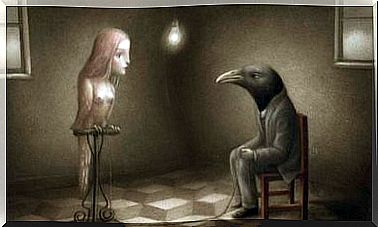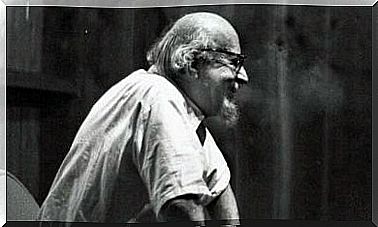Leon Festinger: An Experience Of Cognitive Dissonance

Decision making is put to the test in an experience of cognitive dissonance. But what is cognitive dissonance? It is a feeling that appears to be derived from a conflict between the subject’s ideas, beliefs and values and his behavior.
Cognitive dissonance results from the incompatibility of thoughts, which creates a state of considerable discomfort in people.
We can then understand cognitive dissonance as psychological tension. The concept was introduced by Leon Festinger in 1957.
According to this author, this tension forces the subject to create new ideas or skills that alleviate the tension and are complementary to his system of beliefs. This theory is strongly linked to decision making. Whenever we decide to do something that goes against our beliefs, various strategies are deployed to ease that tension.

Leon Festinger: the creator of a revolutionary experience
Festinger was an American social psychologist born in New York in 1919. His theory of cognitive dissonance has had particular relevance in social psychology, particularly in the areas of motivation and group dynamics.
The theory is based on the fact that the human being is aware of his actions and whenever he does something with which he does not agree, he needs to reduce the dissonance generated.
The experience of cognitive dissonance
The cognitive dissonance experiment was designed by Leon Festinger and his colleague Merrill Carlsmith in 1957. It took place with the students and included the following steps:
- A lone student was assigned boring homework. These tasks were repetitive and aroused little interest. However, the purpose of the experiment was not to assess the performance of these tasks.
- The student was then asked to convince the next participant, as they left the room, that the experience was fun. In short, they were asked to lie
- A reward was offered for lying. Half of the students were offered twenty dollars for lying, while the other half received only one dollar
- The subject who was waiting to participate in the experiment (an accomplice in the experiment) told the students that a friend of his had done the experiment the previous week and found it boring
- Subjects must have been lying while being observed. It was then noted to what extent this lie was the subject of justifications
Cognitive dissonances appeared among students who agreed to lie for a dollar. They had to convince themselves that the experience was fun in order to lessen the conflict.
Why ? Because the reward was not good enough to “feel comfortable” with lying. When it came to justifying their actions, they were particularly strained compared to the group that received twenty dollars. The latter did it in a more natural and casual way.
The conflict of lies
The cognitive dissonance experience leads us to several conclusions. Mainly, the twenty dollar reward group knew full well that the experience was boring. This group also had the necessary justification to say otherwise. This is not the case with the dollar group, where we were able to see how the subjects convinced themselves to alleviate the tension generated by insufficient reward.
Conclusion of the experiment
In a final step, after lying, the lead experimenter asked the participants if they found it really funny. In the $20 group, subjects sincerely expressed that the experience had not been much fun. Ironically, the group that had to convince themselves of the inconsistency of the reward, reaffirmed the lie and many said they would do it again.
Cognitive dissonance results
- Avoidance: Subjects tend to avoid any stimulus that returns them to the original state of dissonance. Situations, people, ideas and places which again find themselves in conflict are avoided
- Seeking approval: as a result of the strategies deployed, the approval of the story or of the reasons on which the subject convinces himself is sought in others in order to justify his actions
- Comparison: Those who suffer from dissonance tend to compare themselves to others to justify their actions

Cognitive dissonance today
Sixty years have passed since the experience and today the subject continues to raise questions and generate open debate. It has been proposed, for example, to justify the defense methods that appear in various psychological pathologies. In turn, it has also been used in the psychosocial analysis of criminals and people who justify their actions by hiding in the group or following orders.
The power of conviction, the relief of guilt
The experience also questions the human tendency to find psychological and mental relief. The contrast between social norms and everyday decisions causes us to experience this unpleasant state more often than we would like. The problem arises when, through this desire to release tension, we end up generating inappropriate behaviors.
Additionally, knowing dissonance can help us identify it when we experience it. It can also help us to measure the influence of the information we obtain from our reference group on us and to observe how the norms that constitute it condition the way we act, think or feel. Finally, it should be noted that cognitive dissonance confronts us with our values, sometimes leading us to update them or to update our way of acting.









